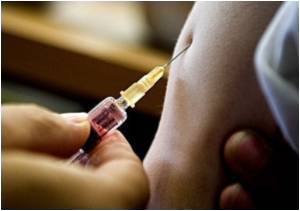It can be said without a doubt that the U.S. measles vaccination program has been successful in eliminating endemic measles in the United States.

In 2008, the largest reported health care-associated measles outbreak in the United States since 1989 occurred in Tucson, Arizona, costing approximately $800,000 in response and containment efforts. In a report published in The Journal of Infectious Diseases and available online, researchers identify preventive measures hospitals and health care facilities can implement to reduce the likelihood and decrease the economic impact of a future measles outbreak in these settings.
Due to a highly effective vaccine and high vaccine coverage, measles was declared eliminated in the United States in 2000; however, the potential for measles infection still exists in this country. Non-adherence to U.S. vaccination recommendations and infection among unvaccinated travelers coming into the United States continue to pose potential threats to the public and to health care personnel. In the 2008 Tucson outbreak, an unvaccinated, infected Swiss traveler visited a hospital emergency department on February 12. The traveler was admitted to the hospital the next day, but a measles diagnosis was not confirmed until February 20. This ignited an intense and lengthy public health investigation and response to persons with suspected and confirmed measles as well as contacts of those persons.
From February 13 through July 21, 2008, there were 363 suspected, 8 probable, and 14 confirmed measles cases in Tucson. All 14 confirmed case-patients were unvaccinated. Seven of the 14 cases were classified as health care-associated infections, and 6 of those cases occurred in a single hospital. Health care-associated transmission included transmission from patient to health care personnel, from health care personnel to patient, from patient to patient, and from patient to visitor.
As part of the investigation, health care facilities attempted to access records documenting evidence of measles immunity for 14,844 health care personnel at seven hospitals. However, none of the hospitals maintained electronic records of health care personnel immunity status, so they were instead forced to review paper records. Without readily accessible electronic records clearly showing immunity status, unnecessary serologic testing was conducted for some personnel who were immune to measles. A total of 4,448 health care personnel at the seven hospitals received immediate measles vaccinations because they lacked documentation of measles immunity. About 15,120 employee hours were lost in furloughs because of presumptive exposure, disease, or lack of evidence of immunity. Overall, the estimated economic impact for just two of the hospitals was almost $800,000, with furloughs for health care personnel accounting for 56 percent of that cost.
In this report, Sanny Y. Chen, PhD, along with colleagues at the Centers for Disease Control and Prevention and Arizona health authorities show the high costs hospitals can incur when responding to measles outbreaks in their facilities. To minimize these costs and to prevent the health care-associated spread of measles, they stress that hospitals must (1) ensure rapidly retrievable measles immunity records for health care personnel, (2) consider measles as a diagnosis, especially among patients presenting with fever, rash, and a recent history of international travel or contact with a person with a clinically consistent rash illness, and (3) institute immediate airborne isolation of patients with suspected and confirmed measles.
Advertisement
- lack of adherence to U.S. vaccine policy recommendations,
- delayed implementation of infection-control procedures in health care settings with patients/personnel experiencing respiratory symptoms,
- delayed implementation of isolation procedures in health care settings with patients with an illness clinically compatible with measles, and
- delayed diagnosis of cases by health care personnel and delayed laboratory confirmation due to lack of awareness of measles.
In an accompanying editorial, Stephen M. Ostroff, MD, of the Pennsylvania Department of Health, calls the report a sobering wake-up call for health departments and hospitals across the country. Recounting the percentage of health care personnel who lacked immunity to measles in the Tucson outbreak, Dr. Ostroff concludes that the same situation most likely exists among other U.S. hospital personnel. International travel and the decision by some individuals to opt out of vaccination increase the risk of future outbreaks, he notes.
Advertisement
Fast Facts:
- Measles is a highly infectious viral disease spread by droplet transmission. It was declared eliminated in the United States in 2000.
- At the time of the 2008 measles outbreak in Tucson, Arizona, 30 percent of health care personnel at seven Tucson community hospitals did not have documentation of evidence of measles immunity.
- The Tucson outbreak cost about $800,000 in response and containment efforts and 15,120 hours in health care employee furloughs.
Source-Eurekalert












